Embarking on the journey of starting a flower garden from scratch is akin to painting with nature’s palette, where every bloom is a brushstroke in your personal masterpiece. Whether you’re a novice with a budding curiosity or a seasoned gardener seeking to cultivate a fresh space, there’s a unique joy and satisfaction in bringing a garden to life. The prospect of transforming a blank canvas into a vibrant oasis teeming with color and life can be both exhilarating and a tad overwhelming. But fear not, for this guide is crafted to illuminate your path, offering insights and practical steps that will empower you to create a thriving floral haven.
In this article, you’ll discover how to thoughtfully plan your garden space, select the perfect plants for your environment, and nurture them to flourish. We’ll delve into essential topics such as soil preparation, plant selection, and the art of arranging your garden for both aesthetic appeal and ecological harmony. Whether you have a sprawling backyard or a cozy urban nook, the principles we explore will be adaptable to your unique setting, ensuring that your flower garden becomes a source of pride and delight. As you read on, you’ll find that gardening is not just about growing plants—it’s about cultivating a connection to the earth and experiencing the simple pleasures of watching your garden evolve season by season.
Select the Ideal Garden Location
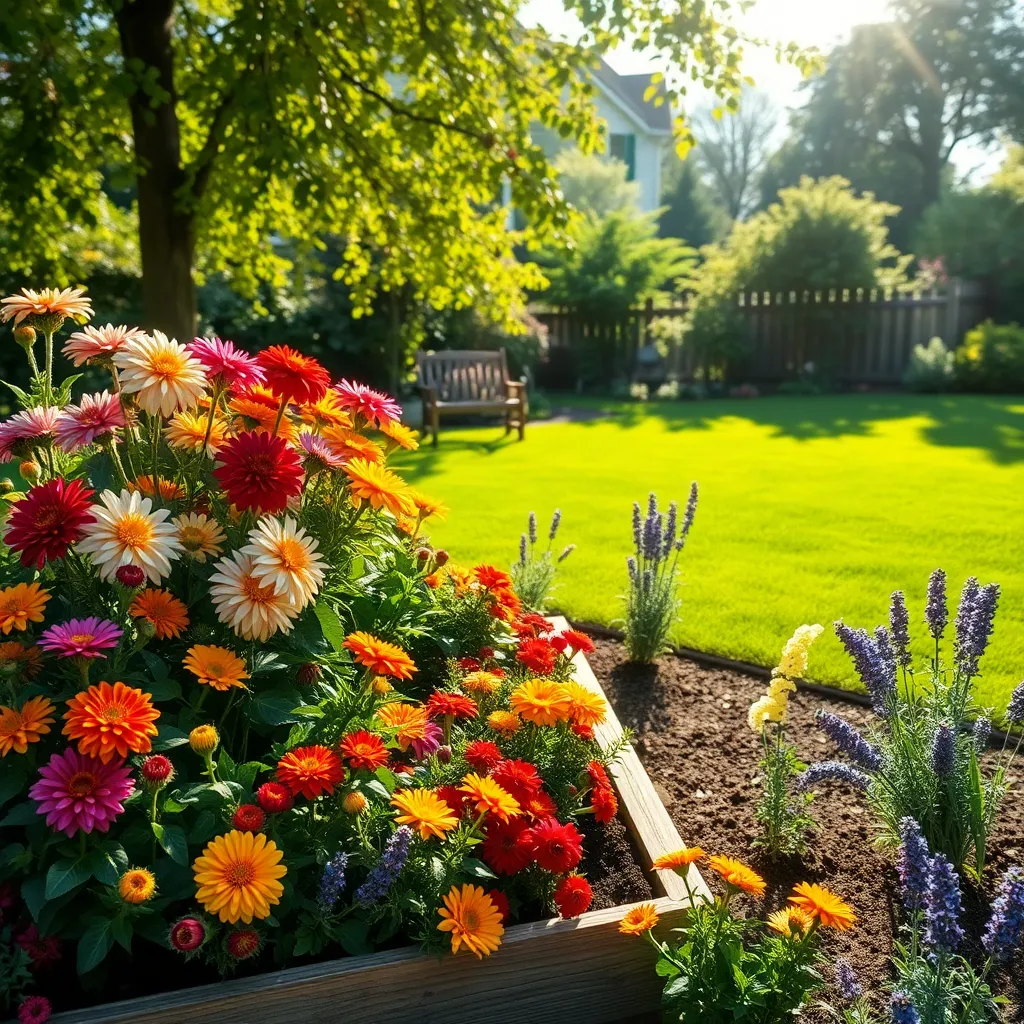
Choosing the right location for your flower garden is crucial for its success. A spot that receives at least six hours of sunlight a day is ideal for most flowering plants, as sunlight is essential for blooming.
Observe the natural drainage of potential garden sites. Avoid areas that are prone to waterlogging as excess water can lead to root rot and other issues.
Consider proximity to a water source, as regular watering is vital, especially during dry spells. Installing a drip irrigation system can be a time-saving solution for consistent moisture levels, which is especially beneficial for larger gardens.
If you live in a region with harsh wind conditions, select a location that offers some wind protection. Planting near a fence or using a windbreak can help protect delicate flowers from damage, ensuring they thrive and bloom beautifully.
Test and Enrich the Soil
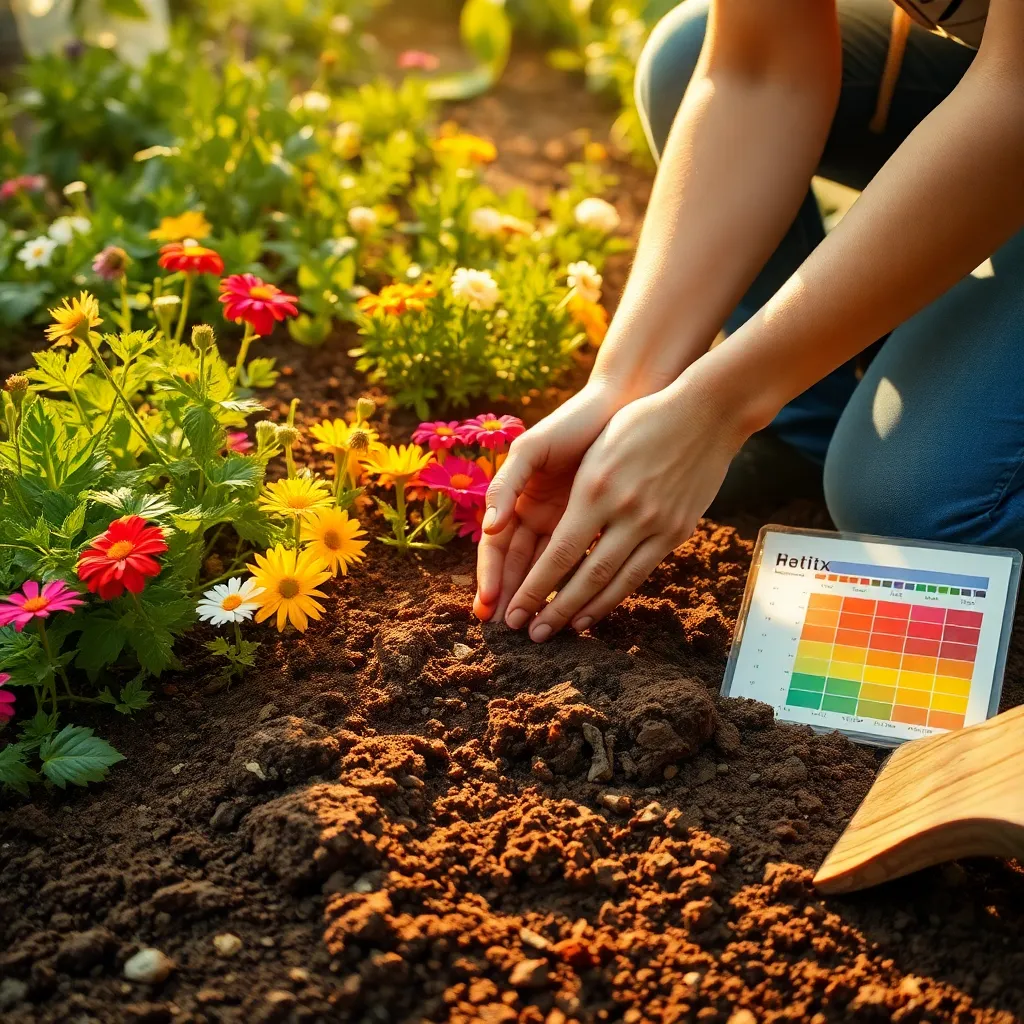
Once you’ve identified the perfect spot for your garden, it’s crucial to test and enrich the soil to ensure your flowers thrive. Begin by collecting soil samples from different areas of your chosen location, as this will help you understand its overall health and nutrient levels.
Testing your soil can reveal important details such as pH level, nutrient deficiencies, and soil texture. Use a soil testing kit, which is available at most garden centers, or send a sample to a local extension office for a more detailed analysis.
Based on your test results, you may need to adjust the soil’s pH. For acidic soil, adding lime is a common practice, while sulfur can help lower the pH if your soil is too alkaline.
Enriching your soil is another critical step to ensure your flowers flourish. Incorporate organic matter such as compost, aged manure, or peat moss to improve soil structure and provide essential nutrients.
For those looking to take their gardening to the next level, consider creating a layered soil structure. This involves adding different materials like sand, compost, and topsoil to improve drainage and aeration, particularly useful for clay-heavy soils.
Regularly testing and amending your soil will lead to healthier plants and more vibrant blooms. Remember, the time and effort you invest in soil preparation will pay off throughout the growing season with a stunning flower garden.
Choose Flower Varieties Wisely
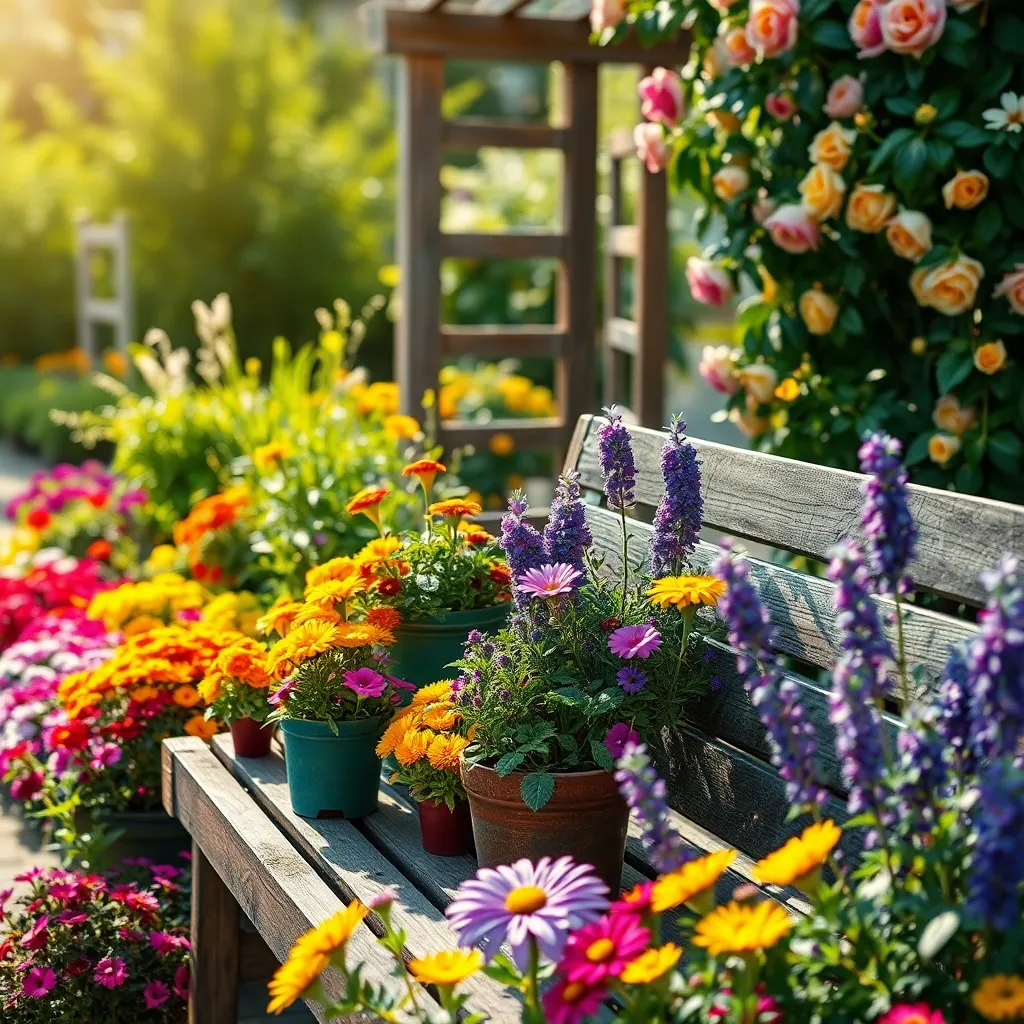
Choosing the right flower varieties is crucial for a thriving garden, as not all plants are suited to every climate or soil type. Begin by researching flowers that are native to your area, as these are more likely to flourish with minimal care and resist local pests and diseases.
Consider the amount of sunlight your garden receives daily, as this will determine which plants will thrive. Some flowers, like sunflowers and lavender, require full sun, while others, like hostas and impatiens, prefer shady spots.
It’s important to think about the bloom times of different flower varieties to ensure a continuous display of color throughout the growing season. By selecting a mix of early, mid, and late-blooming plants, you can enjoy blossoms from spring through fall.
For those looking to add variety without overwhelming maintenance, consider planting perennials that return year after year with little effort. Daylilies and peonies are popular choices that provide vibrant blooms and require minimal care once established.
Ensure you match your chosen flowers with the appropriate soil type to promote optimal growth. For instance, sandy soils are ideal for plants like thyme and lavender, while clay soils support varieties such as asters and bee balm.
Plan and Design Your Layout
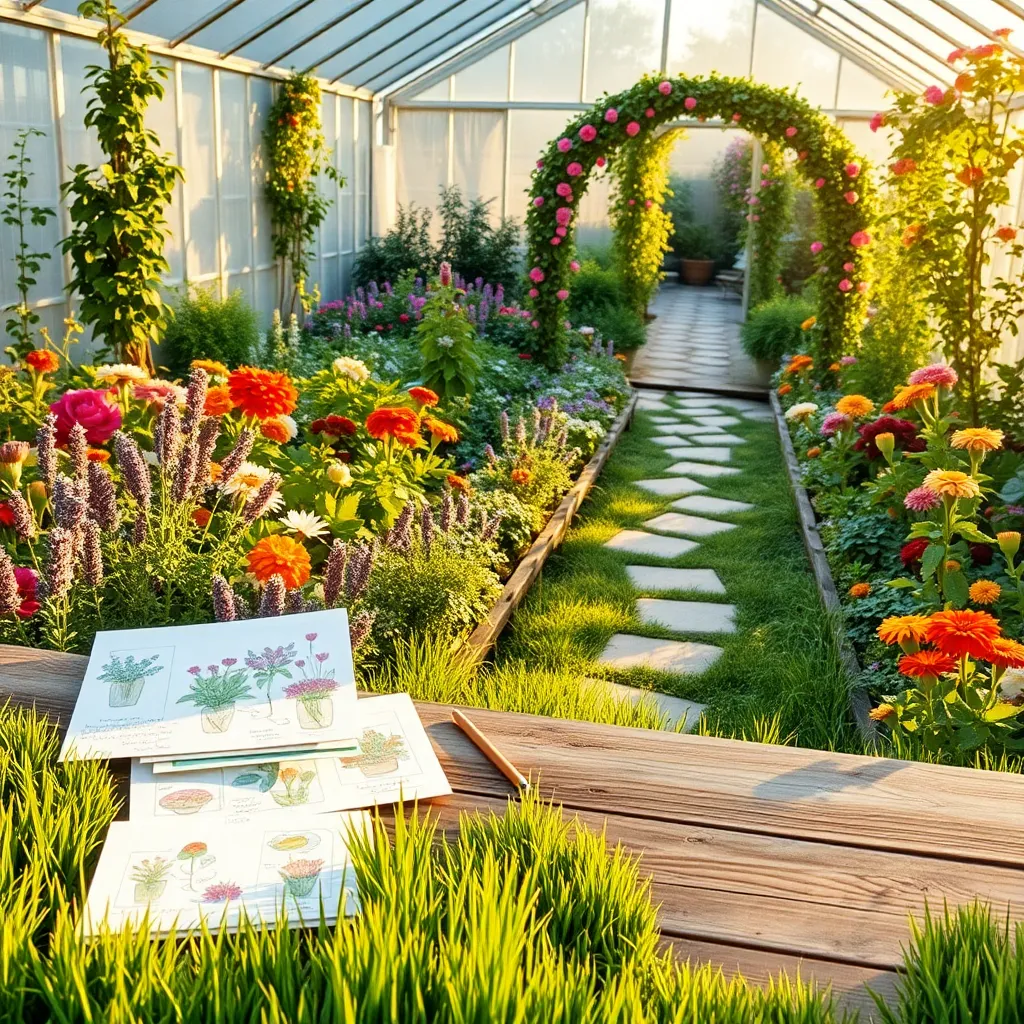
Creating a thoughtful layout for your flower garden is crucial for both aesthetics and plant health. Begin by sketching your garden space on paper, considering the mature size of each plant and the overall design you envision.
Before planting, observe the sunlight patterns in your garden to position sun-loving and shade-tolerant plants accordingly. Group plants with similar water needs together to simplify your watering routine and ensure each plant thrives.
Consider incorporating layers in your garden by placing taller plants at the back and shorter ones at the front. This arrangement not only maximizes sunlight exposure for all plants but also enhances visual depth and interest in your garden.
For a continuous bloom, plan your layout to include a mix of annuals and perennials that flower at varying times. This strategy ensures color and vibrancy throughout the growing season, keeping your garden lively and engaging.
Plant and Water with Care
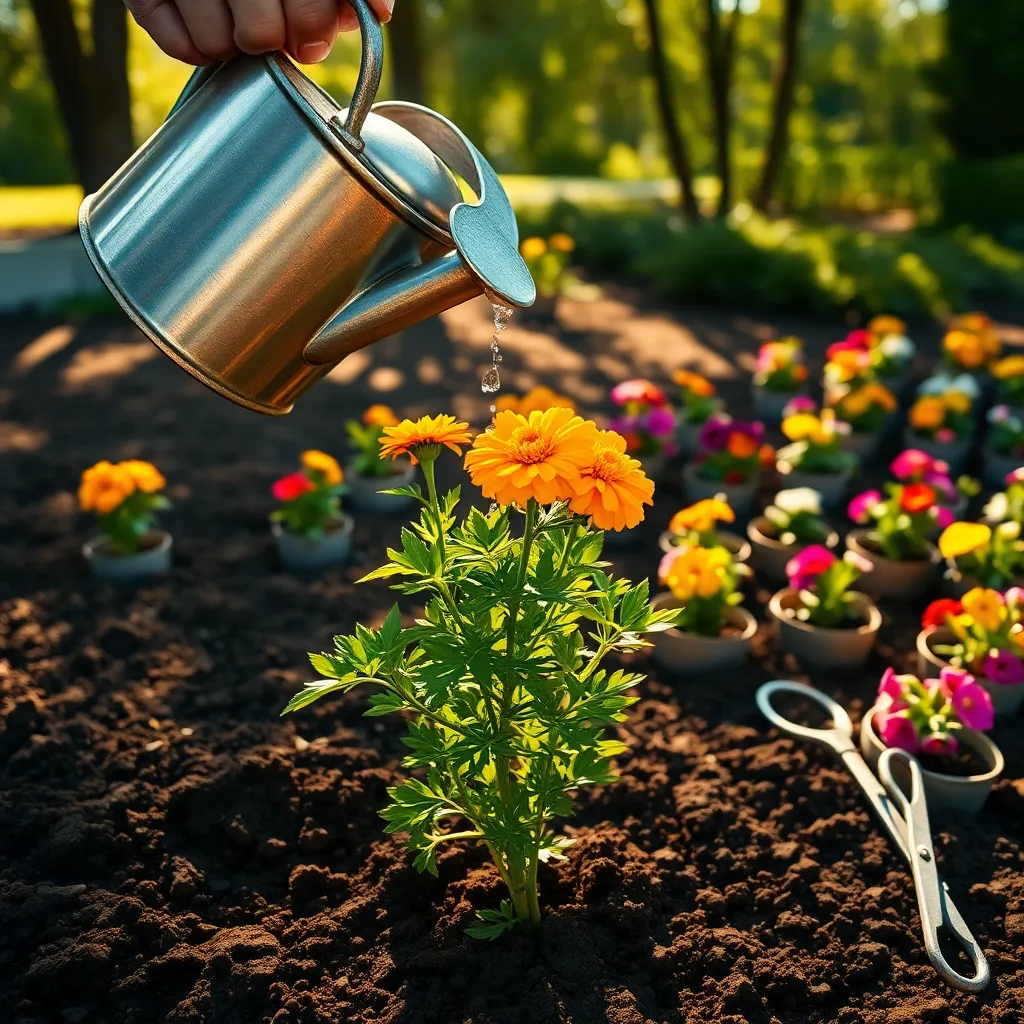
When planting your flowers, consider the specific needs of each variety in terms of sunlight, soil, and spacing. Ensure you dig a hole twice the width of the root ball and as deep as the root system to give your plants the best start.
After placing the plants in the ground, gently backfill the hole with soil, pressing it down lightly to eliminate air pockets. Adding a layer of mulch around your plants can help retain moisture and suppress weeds, which is crucial for healthy growth.
Watering is an essential aspect of plant care, and it’s important to do it correctly. Water deeply and less frequently rather than shallow and often, as this encourages a robust root system.
For beginners, a general rule of thumb is to water when the top inch of soil feels dry to the touch. Experienced gardeners might use a moisture meter for more precise measurements, especially for plants with specific needs like succulents or tropical species.
To conserve water and prevent disease, water early in the morning or late in the afternoon. This practice reduces evaporation and allows foliage to dry before nightfall, minimizing the risk of fungal infections.
Conclusion: Growing Success with These Plants
In nurturing a flourishing flower garden from scratch, we uncover five key relationship principles that can transform how we connect with others. First, the importance of laying a strong foundation through good communication, just as soil preparation is crucial for plant growth. Secondly, the patience required to nurture relationships, paralleling the time needed for seeds to germinate. Third, the necessity of consistency and care, akin to regular watering and pruning. Fourth, the value of diversity, as a variety of plants enriches a garden much like diverse perspectives enhance relationships. Lastly, celebrating growth and milestones, much like enjoying the vibrant blooms of a well-tended garden.
Your actionable step today: choose one relationship you’d like to nurture and identify a small, meaningful gesture you can do to strengthen it.
Bookmark this article as your go-to resource for cultivating relationships with the same care and attention you’d give a garden. Remember, with dedication and love, your relationships can blossom beautifully over time. Embrace the journey of growth and connection, knowing that the seeds you plant today will lead to a bountiful harvest of love and understanding. 🌼
